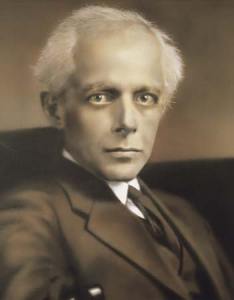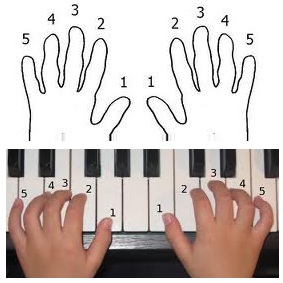Tagged: Tunde Krasznai
The Influence of Folk Music on Hungarian Composer Béla Bartók

Béla Bartók
Image: britannica.com
Tunde Krasznai is a concert pianist who trained at the Weiner Leó Conservatory of Music and the Franz Liszt Academy of Music in Budapest, Hungary, and the University of California, Los Angeles (UCLA). During her time at UCLA, Tunde Krasznai performed music as therapy and also assisted in teaching courses such as The History of Popular Music in America.
In 2016, Ms. Krasznai had the opportunity to give a solo performance at a Miami Hungarian Church memorial concert called “Remembering the Hungarian Revolution.” Among the pieces she played were works by composers such as Chopin, Liszt, and Bartók.
One of the key Hungarian composers of the mid-20th century, Béla Bartók grew up in a diverse, multicultural setting. An obsessive ethnomusicologist, he collected songs from around the world, with an emphasis on folk pieces from Eastern Europe. Cumulatively, he gathered and preserved more than 10,000 works from Hungary, Romania, and Slovakia.
Bartók’s efforts led to the creation of sophisticated classical works with folk music as a basis, which were vital in presenting an alternative to Webern and Schoenberg’s atonality in the early 20th century. They also informed his greatest work, the five-movement Concerto for Orchestra, which he composed in exile in New York during World War Two and which incorporated folk scales and drone elements.
Music Therapy at Mattel Children’s Hospital

University of California at Los Angeles (UCLA)
Celebrated pianist, music teacher, and music therapist Tunde Krasznai’s work has taken her around the world. After completing her first master’s degree in performance, piano, and music education at Budapest’s Franz Liszt Academy of Music, Tunde Krasznai went on to win a full Fulbright scholarship used toward a second master’s degree in music education and music therapy from the University of California at Los Angeles (UCLA).
UCLA’s Mattel Children’s Hospital provides a complimentary music therapy program for families receiving care. Administering therapists wheel instruments and recording software through the hospital as a part of the hospital’s Music Rx program. This system enables therapists to offer patients individualized support.
Hospital settings can cause children stress, but music therapy programs have shown positive results in reducing these young patients’ pain and strengthening family bonds while in the hospital. They can also help kids better express themselves, lessen stress and anxiety, and their hospital stays more comfortable. Kids don’t need any musical knowledge to participate in the therapy and gain benefits. Depending on the child’s needs, music therapy can include listening, music lessons, or therapeutic techniques of self-expression, like creating a timeline of one’s life through music.
The Liszt Academy in Budapest, Hungary

Liszt Academy
Image: lfze.hu
A concert pianist who has traveled throughout the world, Tunde Krasznai attended UCLA on a Fulbright Scholarship. There, she pursued studies in music performance and music therapy. During her time at UCLA, Tunde Krasznai also worked as a teaching associate in classes covering music, the arts, and architecture. Prior to her time at UCLA, Ms. Krasznai studied at the Liszt Academy in Budapest, Hungary.
The Liszt Academy was founded by Franz Liszt in 1875. The piano virtuoso is well known for also having been a talented composer, conductor, author, teacher, and philanthropist. The institution continues to adhere to Liszt’s belief that gifted musicians should use those gifts for the benefit of humanity. In an effort to nurture genuine talent, world-renowned musicians such as Zoltan Kodaly, Bela Bartok, and Zoltan Kocsis were invited to teach at the academy. More than 140 years later, students at the Liszt Academy continue to be taught with a unique Hungarian style that prizes individualized, one-on-one instruction. Degrees are offered in all classical instruments, singing and opera, jazz, folk music, conducting, and composition.
Located in beautiful, ancient Budapest, much of the school is housed in a stunning example of art nouveau architecture built at the turn of the century. The building recently underwent an extensive renovation, which prepared it to host a large number of the school’s performances.
Benefits of Meditation

Meditation
Image: forbes.com
An accomplished concert pianist and Fulbright scholar, Tunde Krasznai recently earned a second master’s degree from UCLA, where she participated in the Gluck Outreach Program, providing music therapy to a wide range of patients. In her leisure time, Tunde Krasznai practices meditation.
There are many mental, emotional, and health benefits associated with meditation. The practice itself creates an overarching sense of relaxation during the session, but the benefits offered to the body and mind can last long after that.
Meditation is a great way to focus the mind and clear it of distracting or troubling thoughts. By creating this avenue of self-awareness and exploration, one can learn to see situations in new ways and deal with stress more positively. It also helps one cope with negative emotional situations.
Some research indicates that meditation may have an impact on physical health as well. Studies show that the practice can lower blood pressure, alleviate issues with irritable bowel syndrome, and help in the management of acute onset of ulcerative colitis. Meditation has also been shown to have a positive benefit among people with insomnia.
The Importance of Proper Fingering When First Learning Piano

Proper Fingering
Image: keytarhq.com
An accomplished pianist, Tunde Krasznai holds a master’s degree in piano performance and teaching from the Liszt Academy Budapest. Tunde Krasznai also studied at UCLA, where she earned a second master’s degree as a Fulbright scholar.
When first starting to learn piano, it is critical for students to focus on proper fingering. When beginning students simply focus on the fingerings that seem most obvious, they often begin to develop bad habits.
The most obvious fingerings for a given piece are not necessarily the most efficient ones. When students do not think critically about how to finger a piece, they may find that their habits prevent them from playing the song at the proper tempo. Once a student learns a song with one fingering, it is very difficult to relearn it with another.
In general, fingerings should allow for the fewest hand jumps or changes in position possible. When first starting, it can be helpful to ask instructors to provide fingering annotations or to follow close-up videos of professionals to see how they play the notes. Once students have enough experience, they can begin to annotate their own music with the fingerings they devise.